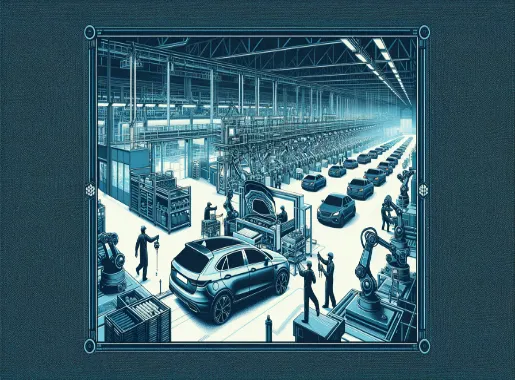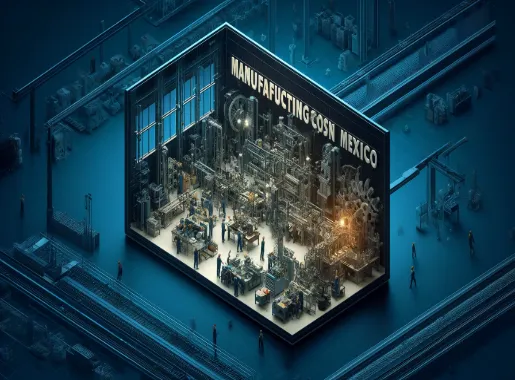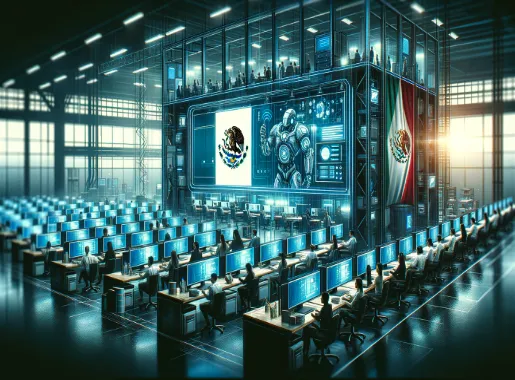The Automotive Industry in Latin America: Navigating through Mexico, Mercosur, and ACE 55
The automotive industry stands as a cornerstone of economic development and technological advancement in Latin America. Countries like Mexico and the Mercosur bloc, comprising Argentina, Brazil, Paraguay, and Uruguay, have emerged as pivotal players in the global automotive landscape. This significance is magnified by strategic trade agreements like the Economic Complementation Agreement No. 55 (ACE 55), which fosters an intricate web of economic relationships and industrial strategies tailored to bolster the automotive sectors within these regions.
The Rise of Automotive Manufacturing in Mexico and Mercosur
The rise of automotive manufacturing in Mexico and the Mercosur region represents a significant evolution in Latin America's industrial landscape. Each area has utilized its unique assets to carve out a space in the global automotive market, driven by both local and international factors.
Mexico's Growth
Mexico's ascension in the automotive sector has been particularly striking. A key catalyst for this growth has been its participation in free trade agreements, notably the North American Free Trade Agreement (NAFTA), and its modern iteration, the United States-Mexico-Canada Agreement (USMCA). These agreements have not only removed significant trade barriers but also solidified Mexico's role as a critical export hub, particularly to the vast U.S. market.
This strategic positioning is complemented by Mexico's robust manufacturing infrastructure, which has matured to meet international standards. The country boasts an extensive network of suppliers and skilled labor at competitive costs, further enhanced by ongoing investments in automotive technology and automotive plant facilities. This environment encourages both domestic production and attracts foreign automakers looking for efficiency and quality in their manufacturing processes
Mercosur's Potential
Turning to Mercosur, which includes powerhouse economies like Brazil and Argentina, the bloc holds substantial potential in the automotive domain, underpinned by a large domestic market and a rapidly growing middle class. This demographic shift is increasing demand for vehicles within the bloc, providing a fertile ground for both local production and imports.
However, Mercosur's automotive industry faces its own set of challenges, which could hamper its growth trajectory. The region's infrastructure, though improving, still lags behind more developed markets, affecting everything from production to logistics. Additionally, protectionist policies within some Mercosur countries have historically isolated the market, imposing high tariffs on imports to protect domestic manufacturers. While this can bolster local industry in the short term, it may stifle innovation and efficiency in the long run, making the cars less competitive on a global scale.
Understanding Ace 55: A Trade Pact for Growth
The Economic Complementation Agreement No. 55 (ACE 55) represents a significant step forward in promoting economic growth within the automotive sectors of Mexico and the Mercosur bloc, which includes Argentina, Brazil, Paraguay, and Uruguay. This trade pact has been instrumental in streamlining operations and bolstering production through various strategic objectives and impactful outcomes.
Objectives of ACE 55
The primary aim of ACE 55 is to streamline the trade of vehicles and automotive parts between Mexico and Mercosur. By removing tariffs and simplifying customs procedures, the agreement reduces the cost and complexity associated with the import and export of automotive components and finished vehicles. This enhanced trade facilitation not only boosts the efficiency of supply chains but also widens market access for manufacturers within these regions.
A further objective of ACE 55 is to foster regional integration and collaborative production efforts. This is achieved by creating a framework that encourages member countries to share expertise, technology, and resources. Such cooperation is essential for scaling production capabilities and fostering innovation within the automotive industry.
Additionally, ACE 55 establishes comprehensive rules of origin and provides preferential treatment for goods traded within the bloc. These rules are designed to ensure that the benefits of the agreement primarily support the domestic industries of the member countries, thereby incentivizing local production and helping to maintain economic balance.
Impact of ACE 55
The implementation of ACE 55 has led to tangible benefits across the participating countries, notably in the form of increased trade volumes. By lowering trade barriers, ACE 55 has facilitated a more fluid exchange of goods, leading to a significant uptick in cross-border trade activities. This increase in trade not only bolsters economic ties between Mexico and Mercosur but also enhances the global competitiveness of these nations' automotive sectors.
Investments in production facilities have surged as a direct result of ACE 55. Automotive companies are expanding their operations to take advantage of the improved trade conditions, leading to more robust manufacturing infrastructures in both Mexico and Mercosur. This expansion is not confined to the assembly of vehicles but extends to the production of a wide range of automotive parts, driving broader industrial growth.
Job creation stands out as one of the most critical impacts of ACE 55. As manufacturers ramp up production and new facilities come online, there is a higher demand for labor. This has resulted in the creation of numerous jobs across the automotive supply chain, from direct manufacturing roles to ancillary services, thereby contributing to economic stability and improved livelihoods within the region.
Challenges and Considerations for Ace 55
The Economic Complementation Agreement No. 55 (ACE 55) has undoubtedly fostered significant growth and cooperation within the automotive industries of Mexico and the Mercosur bloc. However, the implementation of this trade pact has not been without its challenges and considerations. Addressing these issues is crucial for maximizing the benefits of ACE 55 and ensuring equitable development across all participating nations.
Trade Imbalances
One of the primary concerns with ACE 55 has been the emergence of trade imbalances. Mexico has experienced a trade surplus, exporting more to Mercosur countries than it imports. This imbalance has raised concerns among Mercosur nations, which perceive a potential undermining of their local automotive industries. To address this, quotas have been introduced as a temporary measure to manage the flow of imports and exports. These quotas help prevent market saturation in smaller economies and protect local manufacturers, but they are a double-edged sword as they can also limit the potential benefits of free trade envisaged by ACE 55.
Differing Regulatory Environments
Another significant challenge is the differing regulatory environments across the member countries. There is a pressing need for harmonization of technical standards to ensure that automotive products and components meet uniform safety and environmental criteria across all markets. This harmonization would not only facilitate smoother trade but also boost consumer confidence in automotive products across the bloc.
Ensuring fair competition is also crucial. Disparities in regulatory standards can lead to competitive advantages for some countries over others, potentially skewing the market dynamics. A level playing field is essential for fair competition, requiring regulations that prevent monopolistic practices and promote equal opportunities for all manufacturers within the ACE 55 framework.
Strategic Considerations
The following table highlights key challenges and strategic considerations for ACE 55, outlining the issues and proposed strategies to address them:
| Challenge | Description | Proposed Strategy |
|---|---|---|
| Trade Imbalances | Mexico's exports exceed imports leading to concerns in Mercosur | Implement and adjust quotas to manage trade flow effectively |
| Differing Regulatory Environments | Variance in technical standards and competition laws | Harmonize technical standards and ensure regulations promote fair competition |
The Future of Ace 55 and the Automotive Industry
The future of the Economic Complementation Agreement No. 55 (ACE 55) and its impact on the automotive industry in Latin America is poised at a crossroads of opportunity and challenge. As the agreement matures, there are significant prospects for further integration and the adaptation to external factors that could reshape the automotive landscape.
Potential for Further Integration
While Ace 55 has facilitated trade, there's room for deeper integration. Moving beyond quotas that manage trade flow, a complete free trade system could unlock even greater benefits. This would eliminate limitations on vehicle and auto part quantities, allowing manufacturers to optimize production based on regional demand. This free flow of goods could lead to:
- Increased Competition: Freer trade would encourage competition between Mexican and Mercosur manufacturers, driving innovation and potentially lowering consumer prices.
- Specialization and Efficiency: Factories could specialize in specific components, creating a more efficient regional production network.
- Attracting Investment: A fully integrated market would be more attractive to global automakers seeking a larger production base in Latin America.
Furthermore, Ace 55 could be a springboard for collaboration in a crucial area: electric vehicle (EV) development. Both regions are looking to reduce emissions and participate in the growing EV market. Joint efforts in areas like battery technology and charging infrastructure could position them as major EV players.
External Factors
Despite the promise, external factors pose challenges to Ace 55's success. Global trade tensions could disrupt carefully crafted agreements. Protectionist policies by other countries could limit export opportunities for Mexican and Mercosur manufacturers. It's crucial for the participating nations to advocate for free trade principles and work towards a more open global market.
Another major consideration is the rise of new technologies, particularly autonomous vehicles (AVs). AVs have the potential to revolutionize the industry, requiring significant investment in research and development. Ace 55 could be a framework for regional collaboration on AV development, ensuring both regions stay competitive in the future of transportation.
Seek Expert Advice!
The Economic Complementation Agreement No. 55 (ACE 55) has proven to be a cornerstone for the automotive industry in Latin America, fostering significant economic growth and integration between Mexico and the Mercosur bloc. As we look towards the future, ACE 55 offers a platform for deeper cooperation and innovation, particularly in emerging sectors like electric and autonomous vehicles. However, to continue reaping these benefits, ongoing collaboration and strategic adaptation to both internal challenges and external global dynamics are crucial.
To navigate these complexities and capitalize on the opportunities within the Latin American automotive industry, expert guidance is essential. AMREP Mexico, with its seasoned team of expert engineers, offers specialized Production Management Solutions that can help businesses optimize their manufacturing processes and stay competitive in this evolving market landscape.
Get in touch to know how we can support your automotive manufacturing needs in this dynamic region!


